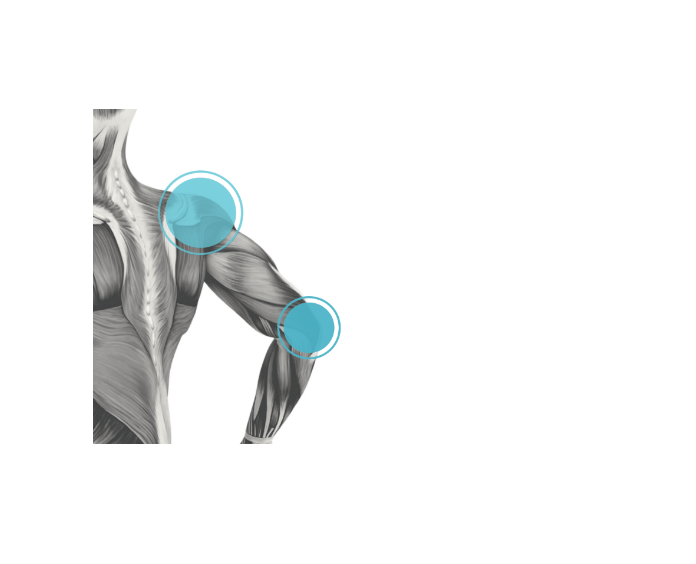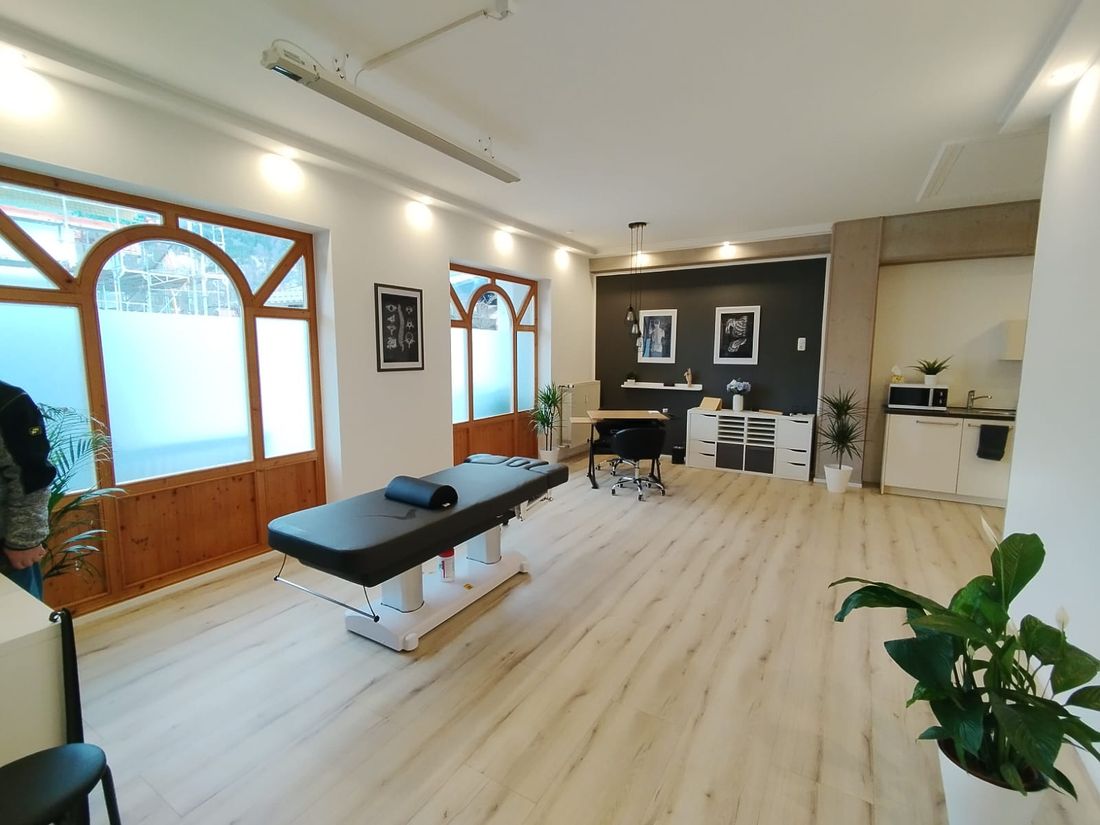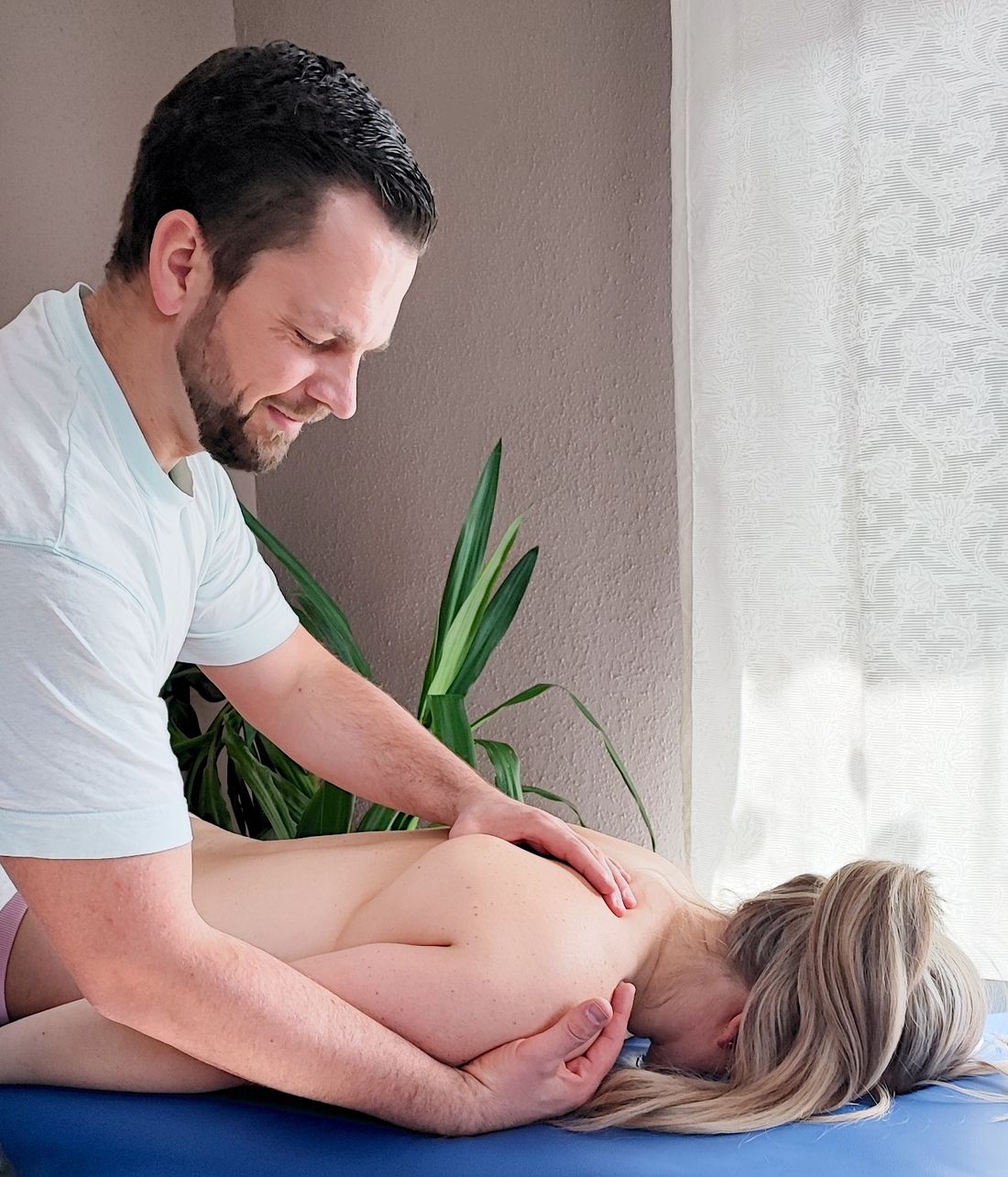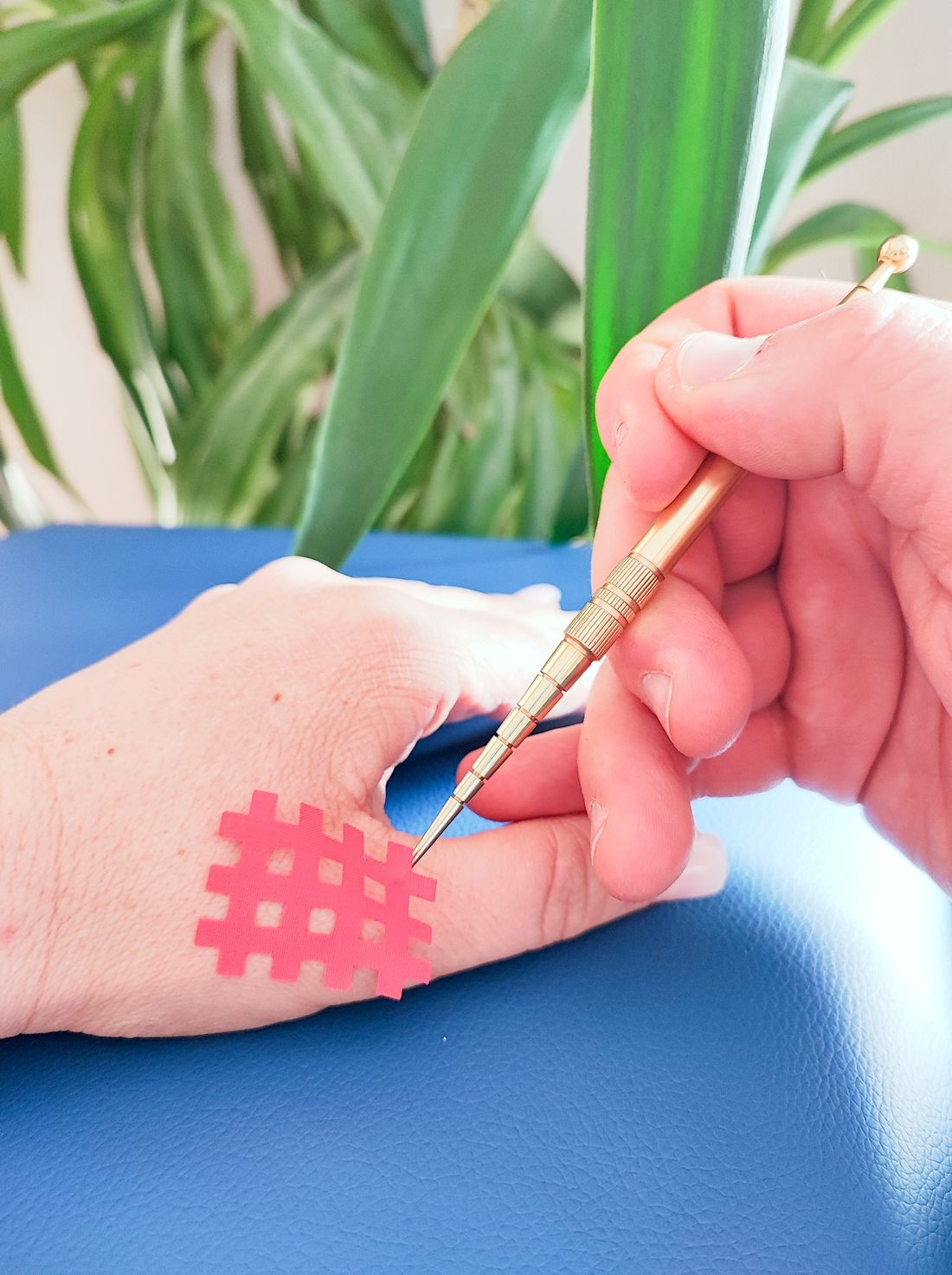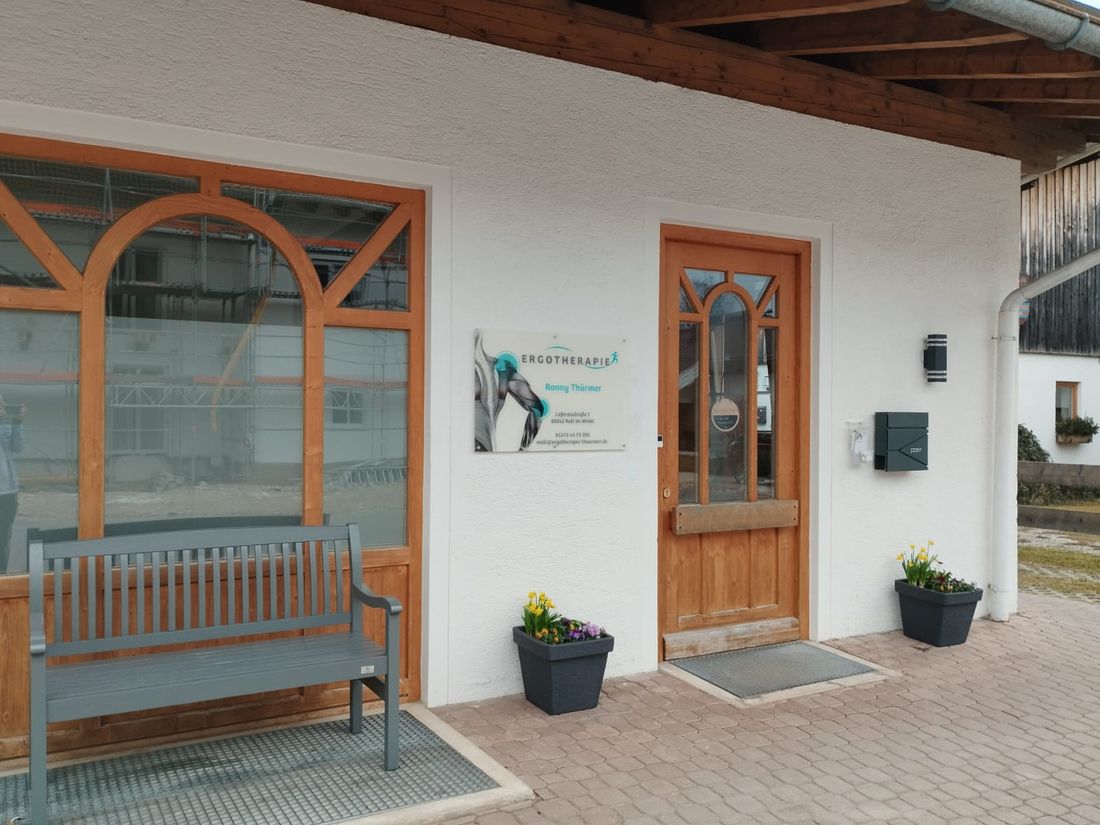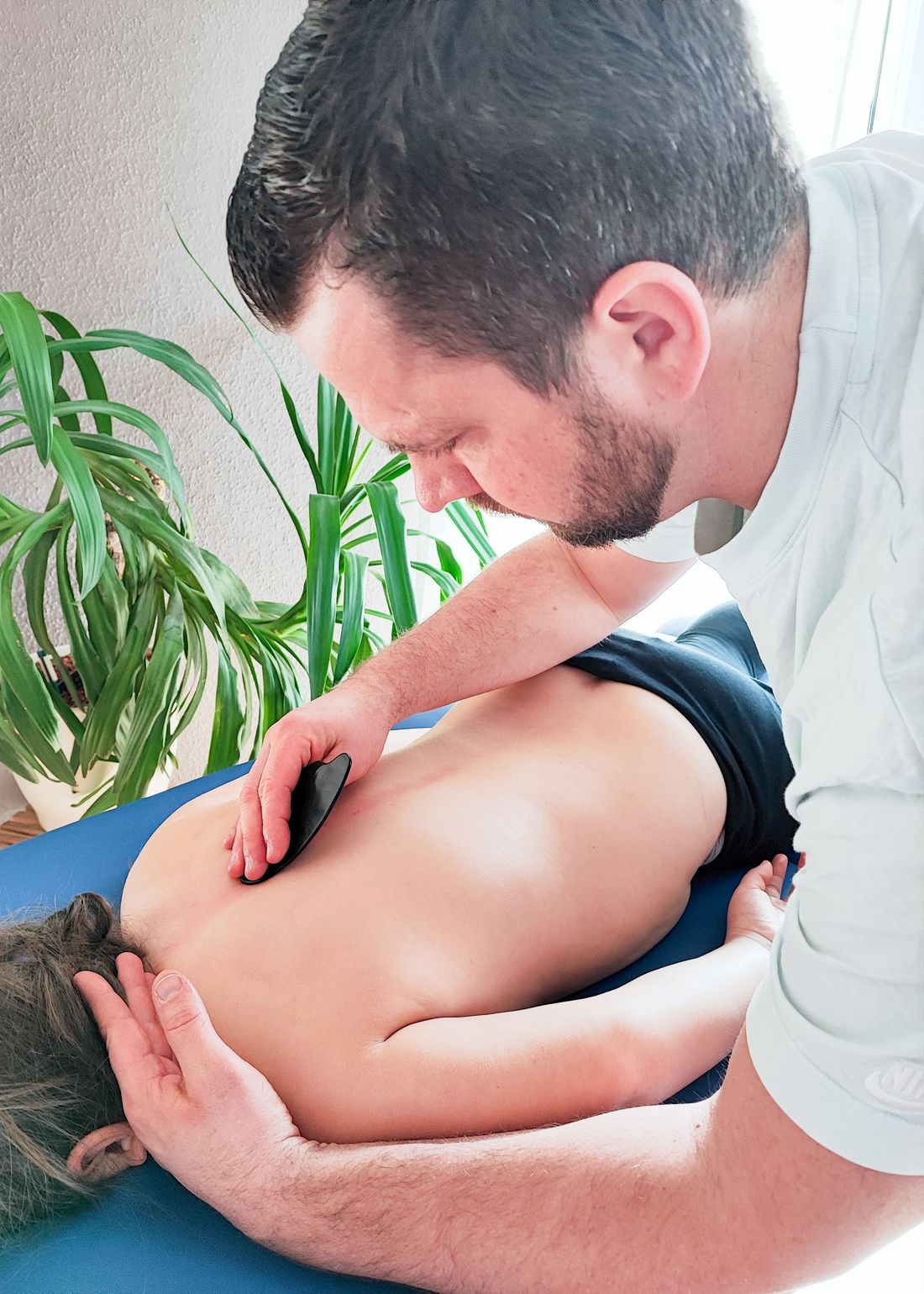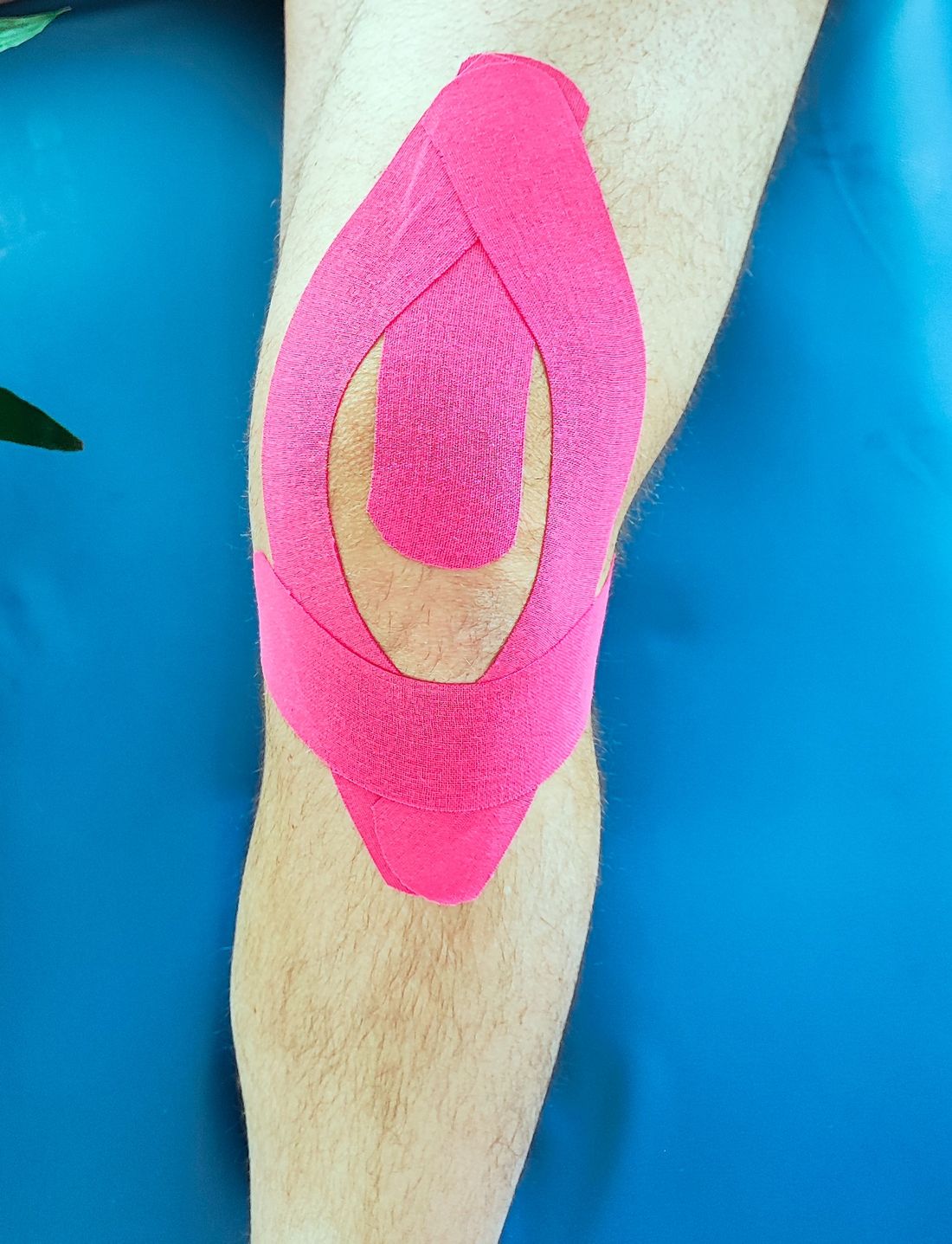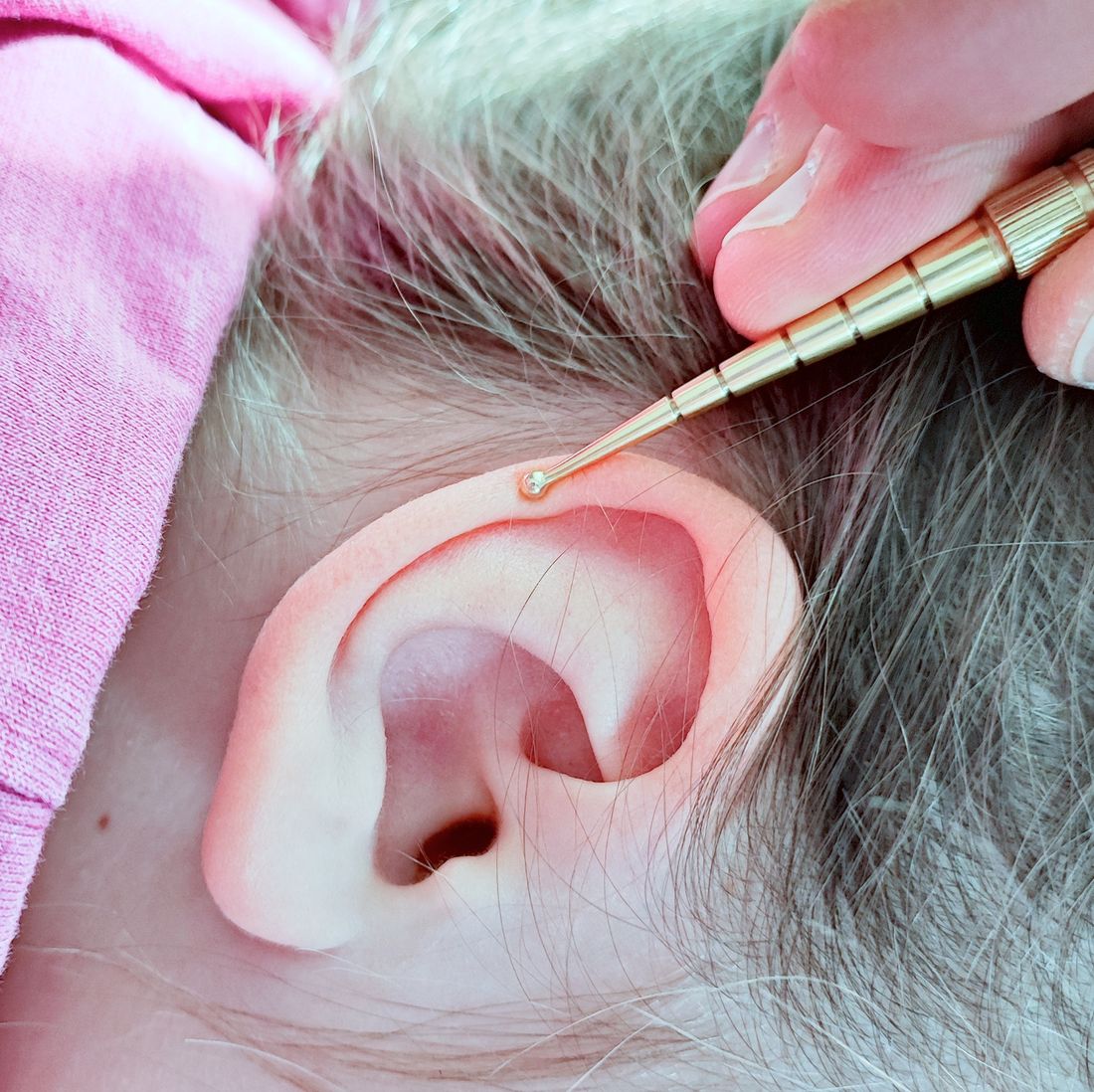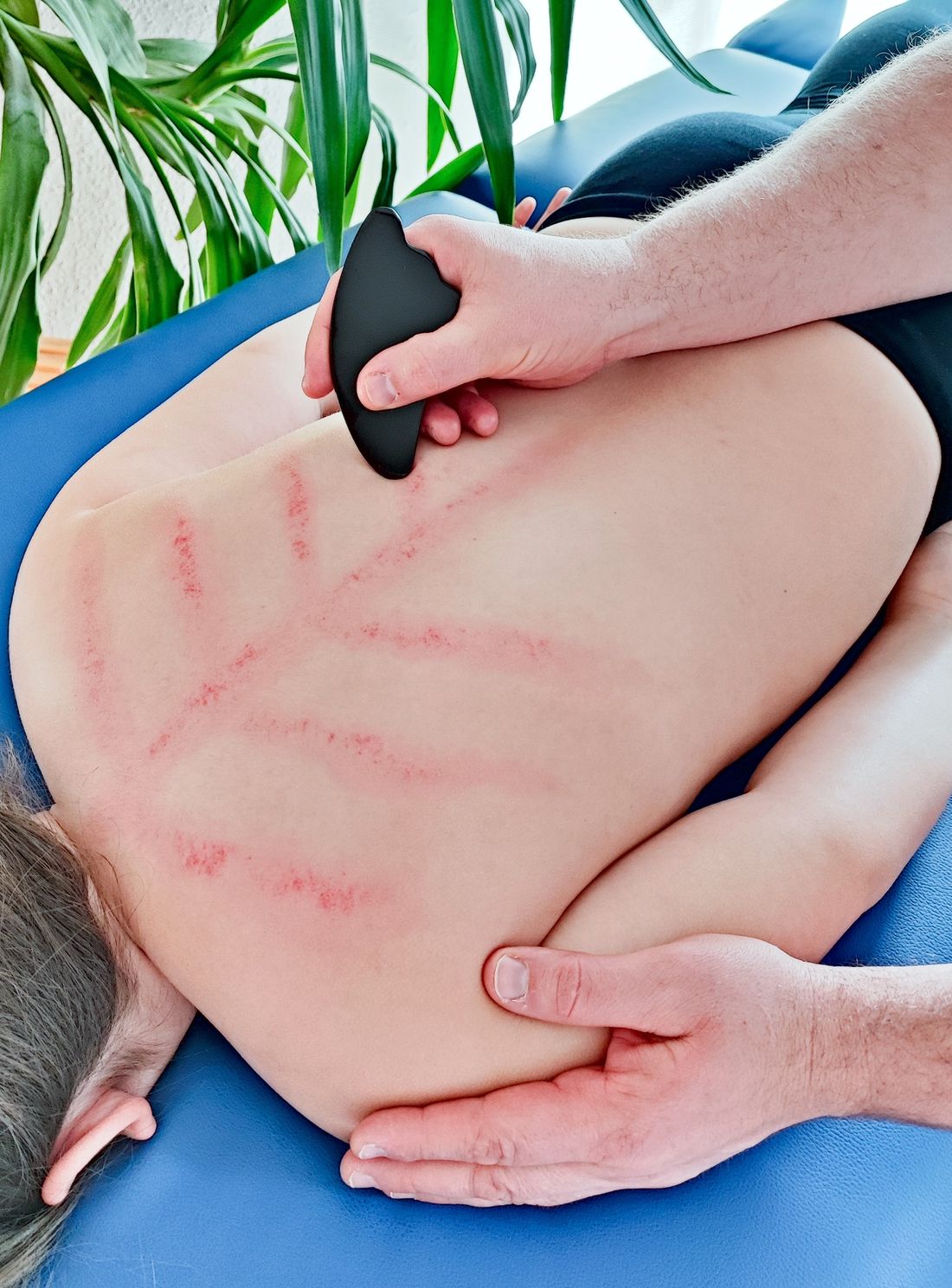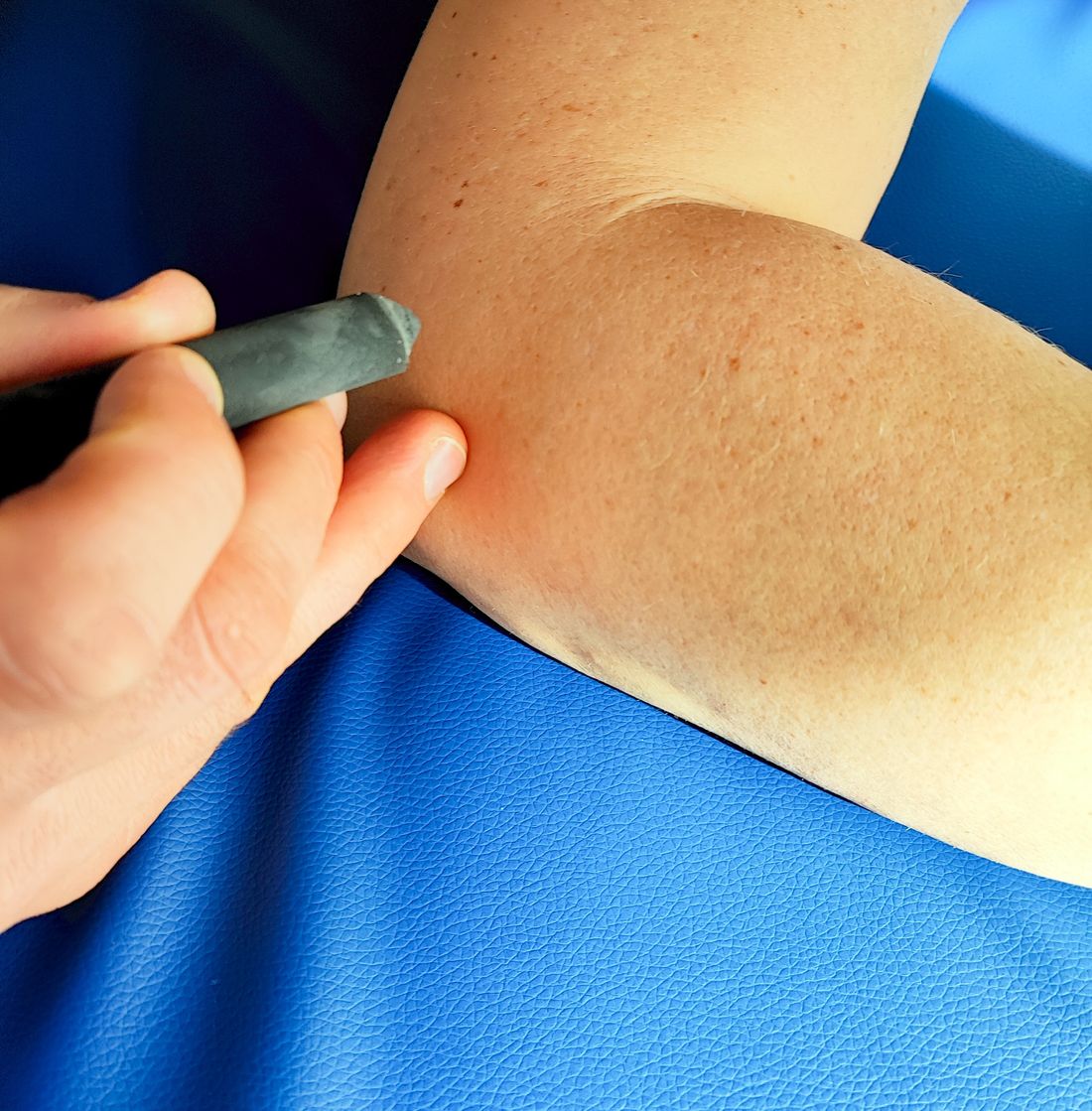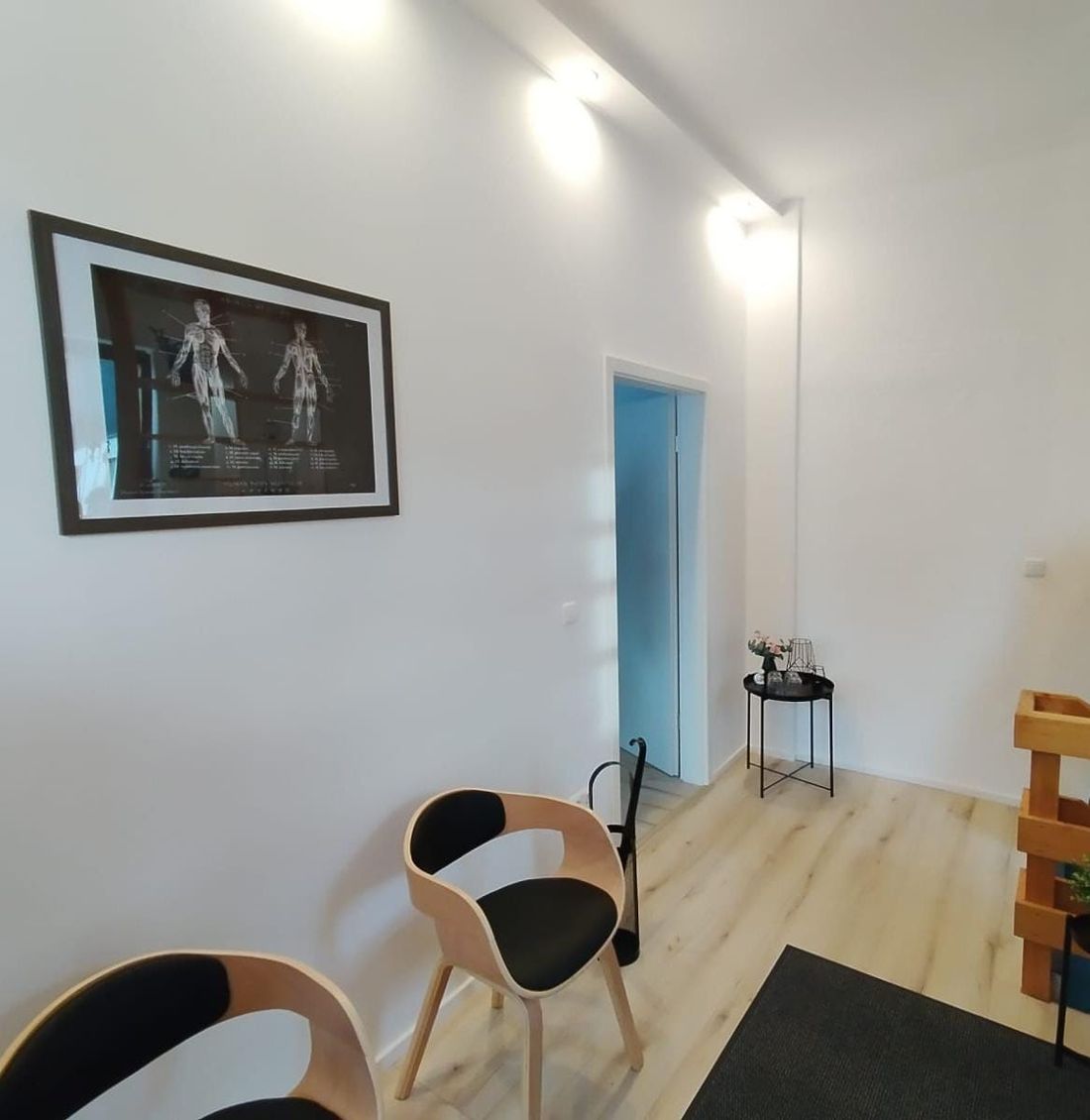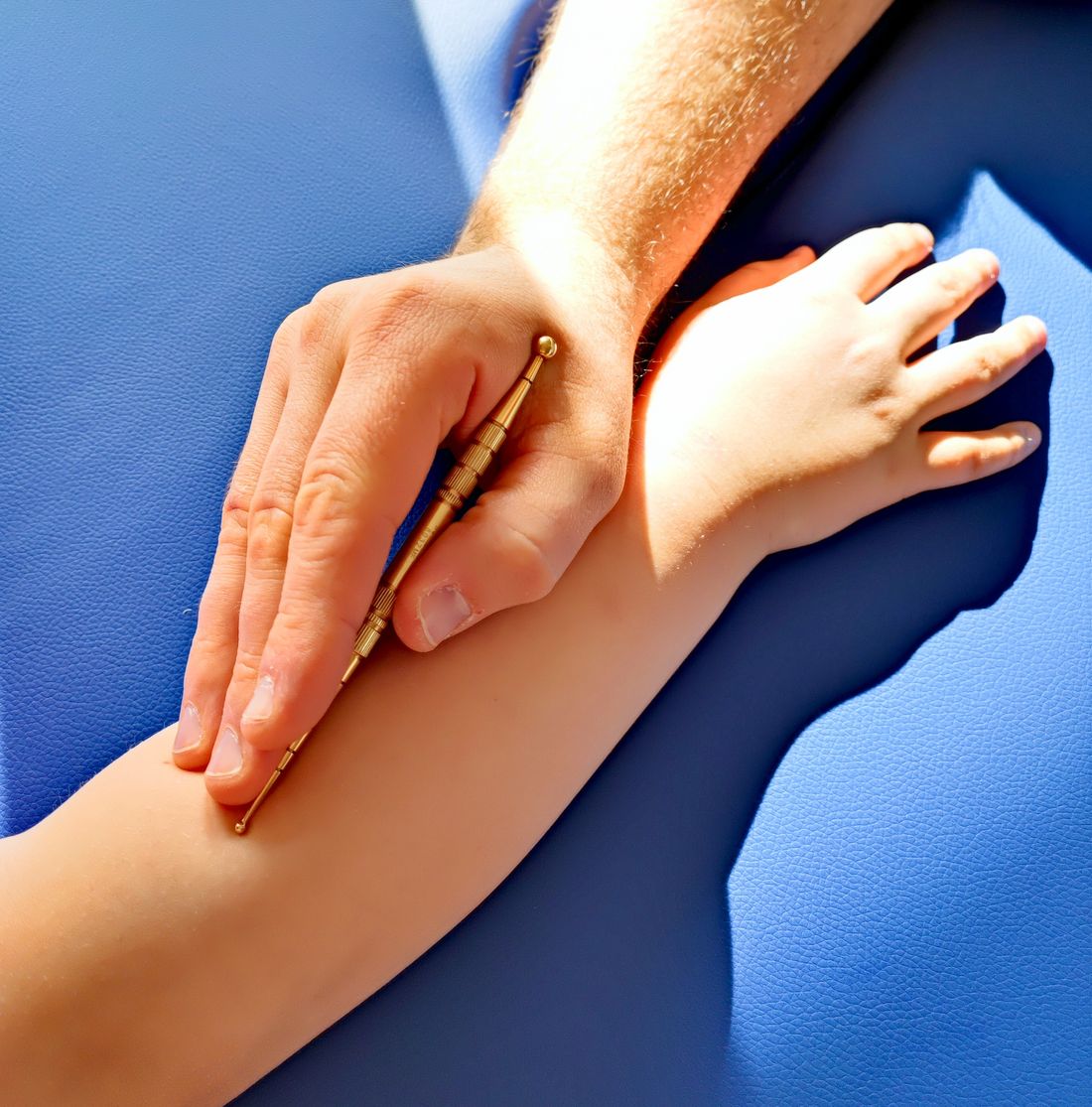I have been an occupational therapist with heart and soul for over 15 years. Helping people and strengthening or restoring their skills and abilities is my personal motivation.
I've mainly specialized in orthopedics and neurology and have gained experience in outpatient rehabilitation, in a practice and in inpatient rehabilitation.
My wide range of treatments not only offers classic ergotherapy, but also includes manual therapy, kinesio taping, flossing, spiral dynamics, fascia therapy, advice on ergonomics and aids, traditional Chinese medicine, professional reintegration, sports physiotherapy and much more
Additional therapy offers to classic ergotherapy
Manual therapy as part of occupational therapy
Manual therapy is a treatment approach in which functional disorders of the musculoskeletal system are examined and treated. Manual therapy is based on special hand movements and mobilization techniques that relieve pain and eliminate movement disorders.
Kinesio Tape
… is used for various ailments and injuries. The body's own healing process is stimulated by supporting the tissue and providing stability without affecting mobility. For this reason, medical taping is often used as a complementary treatment method.
Spiral Dynamics
... is a three-dimensional movement and therapy concept that describes the body structure on the one hand and gives instructions on how to move the body in a healthy way on the other.
Flossing
The treatment involves wrapping an elastic band around a limb/joint with tension. The tissue is strongly compressed by the band for 1-2 minutes and the structures are controlled with passive or active movement. As soon as the band is released, there is an improvement in blood circulation, mobility and pain relief.
Sports Physiotherapy
... is primarily aimed at all patients with sports injuries (muscle injuries, ligament injuries, bruises, etc.). Here, a functional analysis of the injured structure is made and then treated in a targeted manner.
TCM and AMM therapy
The knowledge of traditional Chinese medicine (TCM), which is more than 5000 years old, is increasingly finding its way into western medicine. In order for human energy to flow unhindered, the necessary channels (meridians) must be free and uninterrupted. The task of the AMM & TCM therapist is to distribute the energy evenly, stimulate the flow of energy and ultimately keep it going. The acupuncture meridian massage (AMM) is acupuncture without needles and combines TCM, energetic spinal therapy, Chinese diagnostics and dietetics, auriculotherapy (ear treatment/ear acupuncture) and various forms of external energy such as moxa therapy, bloodless cupping and scraping (Gua Sha).
Guasha
... is a repetitive scraping on oiled skin with a rounded edge (a worn coin, rounded animal horns, or jade). The rounded edge is pressed onto the oiled skin and moved in long strokes along the muscles or the meridians. This procedure causes increased blood flow (Sha) in the skin, which also results in slight bleeding on the surface. Typically, patients feel relief in the tissues immediately.
Fascial therapy (IFT therapist)
The Interdisciplinary Fascia Therapy (IFT method) is a method developed by Christopher-Marc Gordon for the treatment of chronic pain and stress. This special method of myofascial osteopathy is a combination of techniques for pain therapy, stress management, performance improvement and self-help treatment.
Moxa
... is a thermal application from the field of TCM. A glowing pressed mugwort stick is passed over or to the area to be treated (no direct skin contact). It is used to relieve pain and activate various processes in the body. This treatment method has proven particularly effective for heel spurs and epicondylitis (tennis elbow / mouse arm).
Feel-good treatments (massages) / personal training
It doesn't matter whether it's a little time out to relax or active functional training according to your individual goals (increased mobility, strength building or pain reduction), you can book this additional offer with me.
What is occupational therapy?
Definition according to DVE (German Occupational Therapy Association):
Occupational therapy supports and accompanies people of all ages who are restricted in their ability to act or are threatened with restriction. The aim is to strengthen them in carrying out meaningful activities in the areas of self-sufficiency, productivity and leisure time in their personal environment.
Specific activities, environmental adaptation and advice serve to enable people to act in everyday life, to participate in society and to improve their quality of life.
This is how occupational therapy helps
Occupational therapy is as individual as its patients. It is used in various medical specialties. The treatment methods in occupational therapy are correspondingly diverse. Specially tailored exercises help the patient to cope with everyday life as independently as possible. This enables the patient to participate in social life and improve their quality of life.
Orthopedic diseases of the upper and lower extremities
(Fractures, tendon injuries, follow-up treatment after prostheses [shoulder, elbow, finger, knee and hip], Dupuytren's disease, polyarthrosis, arthritis, scar treatment, correction of incorrect posture, gait training and much more.)
Neurological diseases
(Follow-up treatment after Apolex/stroke, polyneuropathy, Parkinson's disease, multiple sclerosis, sensory disorders, e.g. after spinal surgery, etc.)
Chronic pain
(CRPS/Sudeck's disease, fibromyalgia, chronic back pain and much more)
Ergonomic workplace advice/advice on aids/reintegration into the home or professional environment
Back School
Company health management / company sport
Occupational therapy versus physical therapy
Both occupational therapy and physiotherapy are based on helping patients to cope better with their everyday life. The big difference between occupational therapy and physical therapy lies in the goal setting. If you take a look at the meaning of the words 'physio' and 'ergo', the difference becomes clear. Both terms come from the Greek. 'Physio' means naturally, 'ergo' is translated as work or action. Physiotherapy therefore follows a function-oriented therapy approach, with exercises and other treatments intended to maintain or restore the body's natural functionality. Occupational therapy, on the other hand, is holistic and action-oriented. It is intended to restore the independence of the patients in their everyday lives.
All treatments are possible for patients with statutory health insurance, BG patients, privately insured and self-payers. I am available to you with confidence for any questions or concerns.
